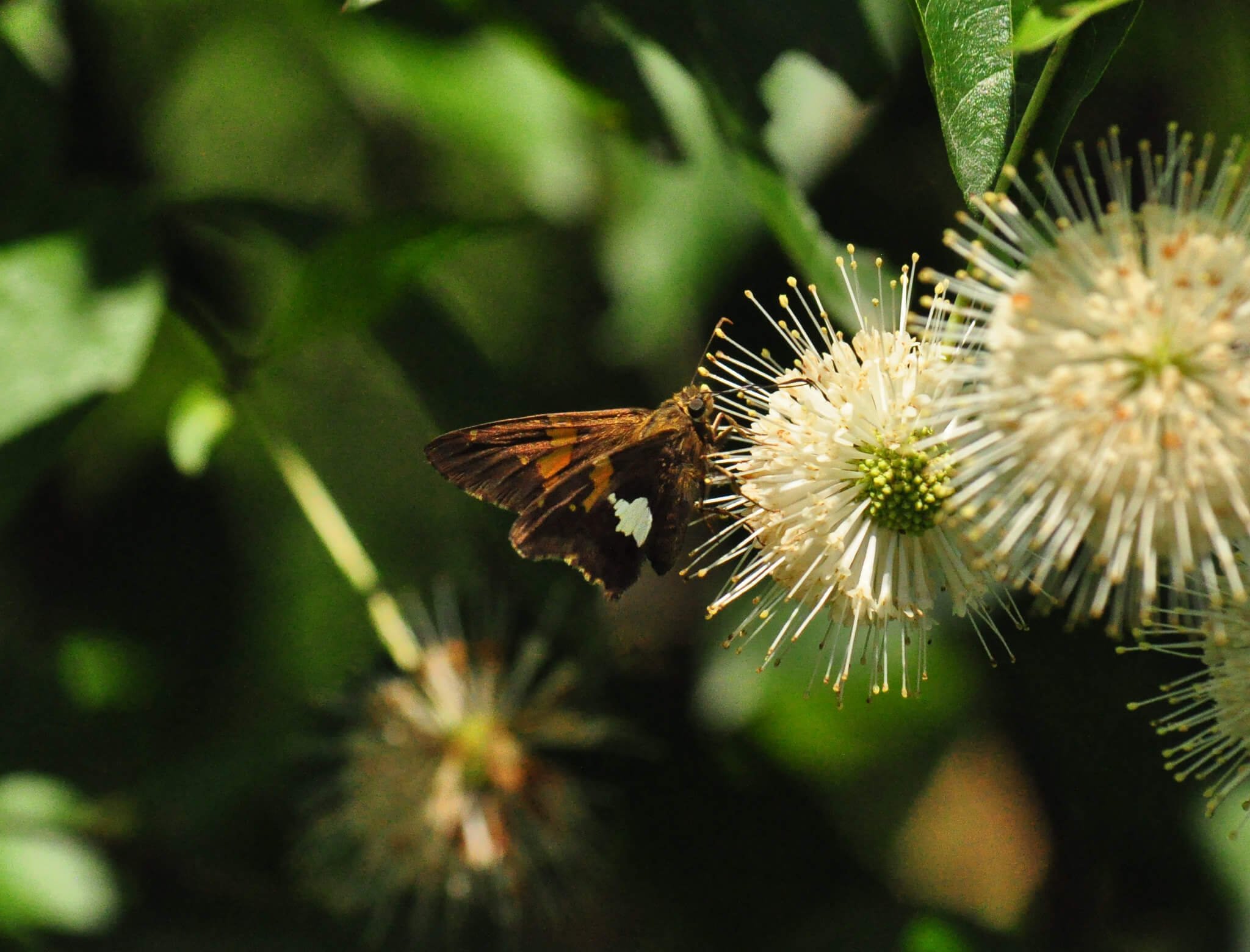Silver-Spotted Skipper
The silver-spotted skipper is one of our largest, most widespread, and most recognizable skippers. It is characterized by a large white spot on the underside of each hind wing. You can often find it in disturbed and open woods, foothills, and prairie waterways.
Photo credit: John Blair
-
Lead Plant (Amorpha canescens)
Hog-Peanut (Amphicarpaea bracteata)
Honey Locust (Gleditsia triacanthos)
Tick-Trefoil (Desmodium spp)
Vetch (Astragalus spp)
Cooper's milkvetch (Astragalus neglectus)
Wisteria (Wisteria frutescens)
-
Butterfly Pea – Clitoria mariana
Downy Milkpea – Galactia volubilis
Hyacinth Bean – Lablab purpureus
-
Can be found puddling
Black-eyed Susan, Blazing Star, Buttonbush, Dogbane, Goldenrod, Ironweed, Joe-Pye Weed, Milkweed, Monarda, New Jersey Tea, Perennial Pea (Lathyrus), Purple Coneflower, Thistle, Vetch, Wild Indigo, Wild Sweet William
-
Alfalfa, Butterfly Bush (make sure you use a sterile variety), Mexican Sunflower, Red Clover
-
May-October. 2-4 broods per year, last brood overwinters
-
Butterflies and Moths of North America. Butterfliesandmoths.org
Brenda Dziedzic, Raising Butterflies in the Garden
Heather Holm, Pollinators of Native Plants
National Wildlife Federation. Nwf.org
Xerces Society. Xerces.org

